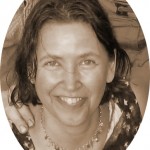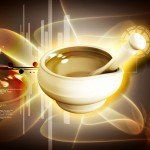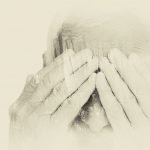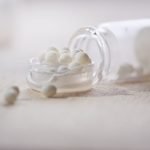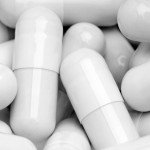For the Love of Peat: Infertility Has a Chance
Sussanna Czeranko, ND, BBE
The number of women who will be sitting in waiting rooms this year, anxious and wishing for good news, will number more than 7 million. If more than 7 million partners are sitting at home waiting for their wives to return with the good news, that totals a lot of angst and longing for a child. In the United States, one in eight couples is plagued with infertility (National Center for Health Statistics, 2002). Twelve percent of American women are infertile, and 1% of all infants born are through assisted reproductive technology (ART). In other parts of the world, peat has been used for centuries as a traditional treatment for gynecological conditions, one of which is infertility.
“Peloids” and Balneotherapy
In North America, our familiarity with peat is limited to the black or dark brown composition that we use to create the right soil blend for our gardens. It is dry and fibrous and retains moisture in those gardens. Peat is abundant both in the garden center store and in nature. Peatlands cover a total of 3% of global land area, or 3,850,000 to 4,100,000 km² (Strack, 2008, p. 71). Ninety percent of global peatlands are found in the temperate regions of the northern hemisphere. Canada has the largest peatlands, amounting to 1,114,000 km2, although only 15% is used for agriculture. This colossal area in Canada yields 50 million tons of peat that accumulate annually, even though only 800,000 tons are excavated for production.
Although the peat capacity and production data from Canada can give us a sense of an abundant resource, peat is not created quickly. Indeed, the process of forming peat takes thousands of years to generate a peat bog. Therapeutic peat is determined by its active constituents, which are more detectable in older peat that was formed more than 20,000 years ago (Paşca & Kiss, 2000, p. 251). Peat belongs to a class of therapeutic agents called peloids, “a term derived from the Greek word pelos [meaning] mud” (Petr et al. 2012, p. 94 Peloid is a term that was suggested by Dr S. Judd Lewis in 1949 and was adopted by the International Society of Medical Hydrology (1949) to cover all forms of external and internal applications of clay, mud, peat, and fango (paraffin and peloid). Peloid therapy is just one branch of balneotherapy. The International Society of Medical Hydrology described balneotherapy as “the medical application of natural mineral waters, gases and peloids as well as equivalent agents and herbal baths, containing relevant amounts of substances being effective for the prevention or treatment of diseases and rehabilitation” (Gutenbrunner et al., 2008, p. 4).
Peloids are derived and excavated from a complex wetland ecosystem that is home to acidic and stagnant water, poor soils, and the habitat of very distinct plants. Peat formation occurs in semi-anaerobic conditions, with a stable water table and an abundance of vegetation, both in plants and algae. In the generation of peat, the true stars are the microorganisms essential for degradation of plant material. Without the activity of certain microorganisms, peloids could not form (Prat et al., 1963, p. 254). In fact, it is the soil microorganisms that contribute to “soil structural development and the synthesis of various plant nutrients through the mediation of various biogeochemical cycles” (Tate, 1985, p. 2). When soil is stressed by heavy metal contamination or disruptive pH changes, it is the role of the microorganism to restore balance.
The microorganisms in a peat bog essentially transform vegetation into organic, biologically active constituents. Wolfgang Paul, a researcher who spent decades studying the therapeutic benefits of peloids, remarked that “soil microbes are necessary for the entire formation of all living beings” (1970, p. 63). He explained: “Up to 7 tons of living microbial cells are in a single hectare” [2.5 acres] of land (Paul, 1970, p. 63). The abundance of microorganisms in the soil parallels the proliferation and function of gut flora found in the intestines, similar to microorganisms in the peat bog:
[T]he human gut is the natural habitat for a large and dynamic bacterial community…the large intestine contains a complex and dynamic microbial ecosystem with high densities of living bacteria, which achieve concentrations of up to 1010 or 1012 cells/g of luminal contents. (Guarner & Malagelada, 2003, p. 512)
Guarner and Malagelada continued: “The intestinal habitat of an individual contains 300–500 different species of bacteria, and the number of microbial cells within the gut lumen is about 10 times larger than the number of eukaryotic cells in the human body” (2003, p. 512). This diverse community of gut bacteria is responsible for a significant range of vitamin synthesis, “particularly those of the B group and vitamin K” (Hill, 1997, p. S43). The relationship of the human gastrointestinal tract to its flora resembles the importance of the microorganisms in the peat bog and the therapeutic constituents that they help create.
Peat—A Living Pharmacy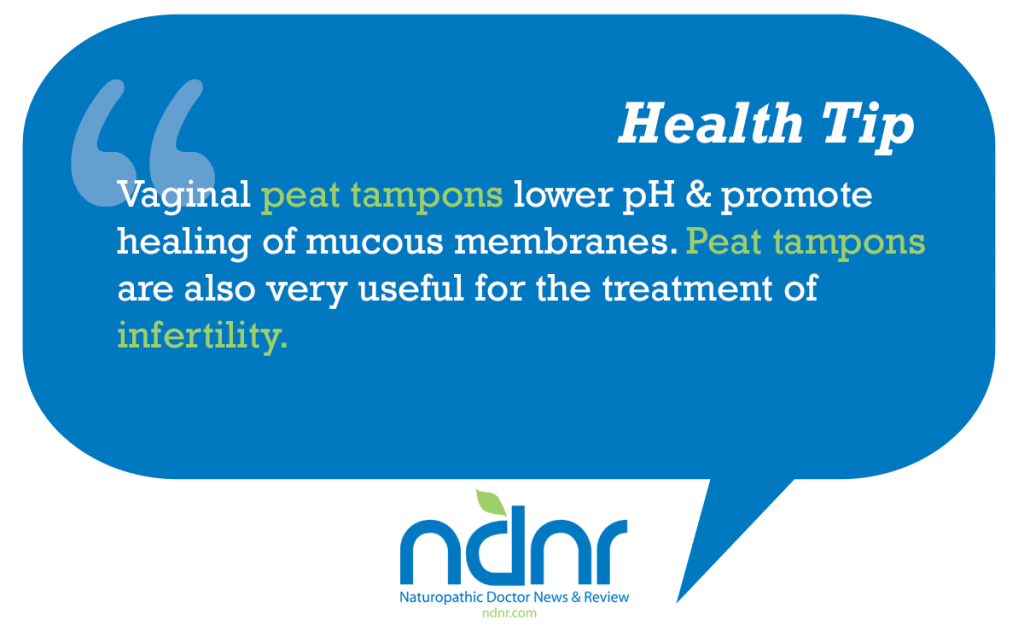
Peatlands that are used for therapeutic purposes generally are classed as Sphagnum peat or Carex peat. The plants of the Sphagnum bogs are mostly mosses, and the Carex lands comprise a richer topography of organisms that include traditional medicinal plants and nonmedicinal plants, grasses, and sedges. Examples of medicinal plants include Drosea rotundifolia, Convallaria, Vaccinium, Inula, Primula, Arnica, Euphrasia, Gentian, Hyoscyamus, Potentilla, and others. Peat can be said to be a living pharmacy derived from hundreds of plants, many of them well-recognized medicinal plants accumulated over thousands of years. In this regard, Paul commented on the elixir properties of plants: “How much more concentrated are the thousand-fold healing substances of the [peat] in producing a healing effect directly on the skin or in the stomach of the sick person, since they are not yet ‘dead’ but ‘fresh and alive’” (1970, p. 16).
How unlike the dry gardening variety is medicinal peat. Its appearance is black. It is a moist paste with no recognizable vegetative matter, and its texture is smooth and silky when rubbed between the fingers. Peat itself is a heterogeneous mixture of more or less decomposed plant (humus) material. Therapeutic-grade peat is determined by the degree of humification, moisture, pH, and its constituents. The moisture content of peat in its natural state is about 90%. (Kwak, 1986, 106) The optimum peat pH is between 3.5 and 4.5, which is slightly lower than the 4.5 pH of skin: “Therapeutic peat should have a lower pH than human skin so as to prevent the activity of harmful microbes” (Uosukainen & Pihlaja, 2006, p. 40).
The most widely used system for determining the degree of decomposition is the subjective method of the “von Post scale.” Puustjärvi pointed out that “in practice, the degree of decomposition is determined by squeezing freshly harvested peat in the hand and by examining the compressed peat and water” (1977).
One of the chief properties of peat is its ability to trap water via the numerous microspores within the cellulose structure and retain higher temperature for longer durations. The number of “pores is greater than the volume of the solid components” (Prat et al., 1963, p. 260). It is this structure of peat and its ability to trap water that prompted Hattori’s conclusion: “There is little doubt that the most important therapeutic action of the peloid therapy resides in its thermal properties” (1963, p. 273).
This striking thermal property of peloids means that the physician can work with patients using water at lower temperatures than is the case in hydrotherapy applications, where high temperatures can have certain disadvantages in treatment. Hydrotherapy is defined as the use of tap water in the treatment of disease processes (vs. mineral water, which has ≥1 g of minerals per liter of water in balneotherapy). Peloids not only retain heat for a long time, but the experience of the patient is that the peat seems hotter than it actually is.
Peloid therapy is renowned for its organic constituents, which are becoming of great interest to researchers. Another property of peat is its “power of sorption or of ion exchange of the peloid” (Hattori, 1963, p. 273). The sorption on humic acid of metals, especially heavy metals such as mercury, lead, and cadmium, has clinical implications in the role of detoxification of prevalent body burden (Kerndorff & Schnitzer, 1980).
Estrogenic Effects
Generally, the concentration of humic substances in therapeutic peat needs to be at least 30% and in most cases can exceed 50% (Uosukainen & Pihlaja, 2006; Petr et al. 2012). The most significant components of peat are these humic substances, which attribute very important therapeutic actions such as the following:
- Estrogenic activity that supports endogenous estrogen production (Klöcking & Helbig, 2005, p. 5)
- Antiviral properties, including coxsackievirus, influenza A, herpes simplex, human immunodeficiency viruses 1 and 2, cytomegalovirus, and vaccinia (Klöcking & Helbig, 2005, p. 6)
- Bacteriostatic qualities (Beer et al. 2002, p. 659)
- Elimination of rheumatic factors with the use of Carex peat, due to the large content of humic substances (Uosukainen & Pihlaja, 2006, p. 56)
- Modulation of inflammation (Petr et al., 2012; Klöcking & Helbig, 2005, p. 8)
- Immunomodulating action (Petr
et al., 2012) - Detoxification of heavy metals (Romão, et al. 2008, 691)
- Analgesic properties (Suárez et al., 2011; Espejo et al. 2012, 391)
- Treatment of male and female infertility (Suárez et al., 2011)
The knowledge that peat had estrogenic effects was instigated by two German gynecologists, Aschheim and Hohlweg, in 1933 with their pioneering article on the occurrence of estrogenic substances in organic rich peat (Nissenbaum & Rullkötter, 2011, p. 498). The research today does not deny estrogenic effects of peat and in particular humic acids and substances. Klöcking and Helbig agreed: “Although the components responsible for the estrogenic activity of peat remain under discussion, the results suggest that [humic acid]—provided that they can penetrate the skin—may contribute substantially to the estrogenic effect of peat” (2005, p. 10).
The presence of peat lipids is “very complex since [the] lipids originate from different plant species, their chemical transformations in the soil, and from microbial metabolism” (Uosukainen & Pihlaja, 2006, p. 31). The list is composed of plant derived alkanes, fatty acids, ketones, sterols, cyclic terpenes, and phenolic compounds (Uosukainen & Pihlaja, 2006, pp. 32-34). These lipids have a lengthy list of biological activities influencing health, including antimicrobial, antifungal, antiviral, and anti-inflammatory properties, as well as the capacity to reduce edema (Uosukainen & Pihlaja, 2006, p. 52).
Uosukainen and Pihlaja added: “The fatty acids compose the largest group of compounds belonging to the peat lipids” (2006, p. 53). These fatty acids have been found to induce apoptosis in cancer cells and have shown cytotoxic properties; sterols have a long list of clinical implications, which include antibacterial, anticarcinogenic, anti-inflammatory, antioxidant, antiviral, and hypolipidemic effects (Uosukainen & Pihlaja, 2006, p. 53). The estrogenic effects are easily transmitted via baths, especially in the treatment of infertility.
Fuchsman recollected the history of the use of peat:
[T]he extraction of peat for baths and for the production of medical preparations is exceptionally important in Europe.… The peat baths have been used in Central Europe for the last 200 years, primarily for treating rheumatism and women’s illnesses. (1986, p. 17)
A German researcher, Goecke, who was interested in peloid therapy applied to gynecological conditions, was able to “ demonstrate a rise in temperature and dilation of the blood vessels in the uterine [blood circulation] in response to peat therapy by comparison with a placebo bath and [tap] water bath” (Uosukainen & Pihlaja, 2006, p. 60). As well, changes in pH in vaginal tissues have been noted that result in the prevention of bacterial and viral infections (Uosukainen & Pihlaja, 2006, p. 56).
demonstrate a rise in temperature and dilation of the blood vessels in the uterine [blood circulation] in response to peat therapy by comparison with a placebo bath and [tap] water bath” (Uosukainen & Pihlaja, 2006, p. 60). As well, changes in pH in vaginal tissues have been noted that result in the prevention of bacterial and viral infections (Uosukainen & Pihlaja, 2006, p. 56).
Germany is the site of much research activity in the area of infertility. Uosukainen and Pihlaja confirmed the remarkable results of these treatments. They wrote: “German research has shown peat therapy to be of assistance in many cases of infertility.… Reports quote figures of between 30 to 50% for the proportion of women suffering from infertility problems who subsequently become pregnant” (Uosukainen & Pihlaja, 2006, p. 60).
A Czech Republic spa town, Frantiskovy Lazne, is famous for the treatment of gynecological conditions, especially infertility. This healing center has mineral waters high in carbon dioxide and iron sulphate peloids, which are used in the treatment of infertility. So established was this spa town for infertility that a statue of a little boy was erected in its park. Women who were undergoing treatment for infertility would visit and touch the statue for good luck. The sex of the child they wanted would determine what part of the statue would be touched. So, this statue has a shiny nose and a shiny penis.
Baths and Compresses for Infertility
In the spas of Frantiskovy Lazne, the treatment for infertility involves a comprehensive balneotherapy program of peloid baths, peloid compresses, and mineral baths. Each patient is assessed by a physician, and an individualized program of hydrotherapy, peloid therapy, dietary guidelines, exercise, and physical therapy is formulated. The average treatment is conducted during a 3-week period, occurring on weekdays.
The peloid bath at neutral temperatures of 97 to 99°F (35-37°C) is administered for 20-minute durations three to five times a week. The neutral bath temperature is very comfortable for the patient because the thermal property of peat is subjectively warmer. During this period, the temperature of the peloid bath will drop by 1 or 2°F. Temperatures above 104°F (40°C) may destroy certain therapeutic substances in the peat.
Peloids have also been used internally in the form of vaginal suppositories and tampons. Vaginal peat tampons lower pH and promote healing of mucous membranes. Peat tampons are also very useful for the treatment of infertility. The convenience of the peat tampons is that they can easily replace the peloid bath. According to Beer and Kovariak (1996), 20 to 40 applications of a warm peat tampon (vaginally) for 2 hours to allow it to warm to body temperature can obtain the desired results. (Beer et al. 1996, 527) The peat tampon is an easy treatment that can be performed at home. The spa treatments using peat baths can be costly, time-consuming, and inaccessible.
Peloids are available to us in North America. For the past decade, I have incorporated peloids in my naturopathic practice using peat products from Europe, particularly from the Czech Republic and Hungary. These countries have a long tradition of balneotherapy and peloid therapy. Peloid products processed under the stringent guidelines from these countries are available for our naturopathic practices.
It is easy to teach our patients to self-administer peat tampons. Supplies needed are sterilized gauze and a source of therapeutic peat. A teaspoon of peat is placed on the end of a 4-inch length of gauze and then rolled up into a tampon. The tampon is put into a sealable plastic bag and placed into a bowl of hot water for a couple of minutes to warm. I have skipped the warming phase and have used the peat tampon immediately after making it. In this case, the vaginal tampon is left in place overnight. The peat vaginal tampon has been shown to have 80% success rates in the treatment of papillomavirus infections. (Uosukainen, Pihlaja, 2006, 60) Clinically, I have seen atypical cell changes of the cervix normalize in just a few treatments.
My preference for peloids is from Krasno, Czech Republic, or Heviz, Hungary. These products have exceeded my expectations for peloid therapy.
It is unfortunate that, despite the vast peatlands of Canada, there is no company interested in excavating deep enough to procure therapeutic grades of peat and we must turn to Europe to uncover a source for our clinics. The interest among North American companies is only in the use of Sphagnum peat for horticulture.
Fuchsman praised the virtues of peat:
[T]he physiological effect of peat, even if unclear in specific cases, can no longer be disputed. Peat is a natural resource which shouldn’t only be burned, buried in our soil, and used in horticulture; it should be used in as knowledgeable manner as possible for the welfare of mankind. (1986, p. 17)
Ludmila Jilkova, owner of Torf Krasno, a therapeutic peat company in the Czech Republic, has recounted many stories of peloid therapy and the peat tampon and their uses in Europe. During a visit to the Czech Republic, I was introduced to many physicians who use the peat peloids in their practice. Their clinical successes were remarkable. Similarly, peat applications for gynecological conditions were well known to the early NDs. Adolf Just is famed for his love of the earth and his use of earth for every ailment:
Earth or clay applied to suffering parts of the body draws out all morbid and foreign matter. Herein lies its wonderful value if applied in any malady, no matter its name, be it gout or consumption, or abscesses or female troubles [infertility]; in a word, it is a cure-all for almost every evil of the body. (1906, p. 23)
Sussanna Czeranko ND, BBE is a naturopathic physician licensed in Ontario and in Oregon, practicing since 1994. She incorporates “nature-cure” approaches systematically into primary care by including Balneotherapy, Breathing therapy and Nutrition. As the Rare Books Curator at NCNM, Dr Czeranko is currently compiling an eleven volume series titled, In Their Own Words, based upon the Benedict Lust journals published early in the last century. As the founder of the Breathing Academy, a training institute for naturopaths, she facilitates the incorporation of the scientific model of breathing therapy called Buteyko into their practices.
References
Beer AM, Sagorchev P, Lukanov J (2002). Isolation of biologically active fractions from the water soluble compon ents of fulvic and ulmic acids from peat, Phytomedicine, Vol. 9, pp 659-666.
Beer AM, Kovariak R (1996). Fertility disorders – an indication for treatment with vaginal peat application. 10th International Peat Congress, Bremen, IPS: 527-529.
Espejo L, Cardero M, Torres S, Caro B, Ibañez B, (2012). Effect of pelotherapy on the perception painful and drug use in patients diagnosed with knee osteoarthritis, Medical Hydrology and Balneology: Environmental Aspects, editors: Maraver F & Karagülle MZ, Publicaciones Universidad Complutense de Madrid, pp. 465.
Fuchsman, C. H. (1986). Peat and water: Aspects of water retention and dewatering in peat. Amsterdam: Elsevier Applied Science Publishers Ltd.
Guarner, F., & Malagelada, J. R. (2003). Review: Gut flora in health and disease. The Lancet, 361(9356):512-519.
Hattori, I. (1963). Peleotherapy. In S. Licht & E. Licht (Eds.), Medical hydrology. New Haven: Licht.
Hill, M. J. (1997). Intestinal flora and endogenous vitamin synthesis. European Journal of Cancer Prevention, 6(suppl), S43-S45.
International Society of Medical Hydrology. (1949). Proceedings from the International Society of Medical Hydrology and Climatology meeting; October 9-15, 1949; Dax, France.
Guttenbrunner C, Karagülle Z, Bender T, Cantista P (2008). Definitions in Health Resort Medicine, Balneology, Medical Hydrology and Climatology, Draft to be discussed and approved during the 36th World Congress of the International Society of Medical Hydrology, June 2008; Porto, Portugal, pp. 1-9.
Just, A. (1906). The value of earth as a remedy. Naturopath and Herald of Health, 7(1), 23-25.
Kerndorff, H., & Schnitzer, M. (1980). Sorption of metals on humic acid. Geochimica et Cosmochimica Acta, 44(11), 1701-1708.
Klöcking, R., & Helbig, B. (2005). Medical aspects and applications of humic substances. In A. Steinbüchel & R. H. Marchessault (Eds.), Biopolymers for medical and pharmaceutical applications. Weinheim: WILEY-VCH Verlag GmbH & Co. KGaA. Retrieved October 4, 2012, from http://www.sld.cu/galerias/pdf/sitios/rehabilitacionbal/medical_aspects_and_applications_of_humic_substances.pdf
Kwak JCT et al. (1986). The Role of Colloid Science in Peat Dewatering: Principle and Dewatering Studies, Peat and Water, edited by Charles H. Fuchsman, Elsevier Applied Science Publishers, PP. 95-118.
National Center for Health Statistics, United States Department of Health and Human Services. (2002). Survey of Family Growth (NSFG): Cycle 6. Retrieved October 4, 2012, from http://aspe.hhs.gov/hsp/06/catalog-ai-an-na/NSFG.htm
Nissenbaum, A., & Rullkötter, J. (2011). From the dawn of organic geochemistry (1933, 1938): Estrogenic substances in bituminous deposits and in the Dead Sea. Organic Geochemistry, 42, 498-501.
Paşca, D., & Kiss, S. (2000). Enzymatic potential in some interstadial peats utilizable in balneotherapy. In A. M. Beer, G. Lüttig, & J. Lukanov, (Eds.), Moortherapie 2000: Peat therapy on its way into the next millennium (pp. 245-252). Bad Kissingen, Germany: Balneology Institute.
Paul, W. (1970). Healing earth: Moor. Portland: Metropolitan Press.
Petr, P., Verner, M., Kalová, H., Janečková, B., Vačkářová, O., & Zezulková, I. (2012). Humic substances in balneology: Contemporary situation and perspectives. Biomedicina, Vol. 14, #1, pp. 94-98.
Prat, S, Brožek B (1963). Biology and Physics of Peloids,. In S. Licht & E. Licht (Eds.), Medical hydrology, pp. 254-272). New Haven: Licht
Puustjärvi, V. (1977). Peat and its use in horticulture. Helsinki: Liikekirjapaino Oy Publisher, found on International Peat society website: http://www.peatsociety.org/index.php?id=238
Romão LPC, Rosa AH, Augusto A, Silva MJ, Fabiana AL, Goveia D, Fraceto LF, Rocha J, Burba P, (2008). Extraction and Exchange Behavior of Metal Species in Therapeutically Applied Peat Characterized by Competitive Extractants, Proceedings of the 14th International Meeting of the International Humic Substances Society, From Molecular Understanding to Innovative Applications of Humic Substances, Editors, Perminova IV, Kulikova NA, September 14-19, 2008 Moscow – Saint Petersburg.
Strack, M. (Ed.); International Peat Society. (2008). Peatlands and climate change. Calgary: University of Calgary. Retrieved October 4, 2012, from http://www.peatsociety.org/peatlands-and-peat/peatlands-and-climate-change
Suárez, M, Gonzalex P, Dominguez R, Bravo A, Melian C, Perea M, Herrera I, Blanco D, Hernandez R, Fagundo JR (2011). Identification of Organic compounds iN San Diego de los banos Peloid, Journal of Alternative & Complementary Medicine, Vol. 17, # 2, pp. 155-165.
Tate, R. L., III. (1985). Microorganisms, ecosystem disturbance and soil formation processes. In R. L. Tate, III, & D. A. Klein (Eds.), Soil reclamation processes (pp.1-33). New York: Marcel Dekker.
Uosukainen, H., & Pihlaja, K. (2006). Peat in balneology and therapy. Kempele, Finland: Terraviva Oy Publishing.



